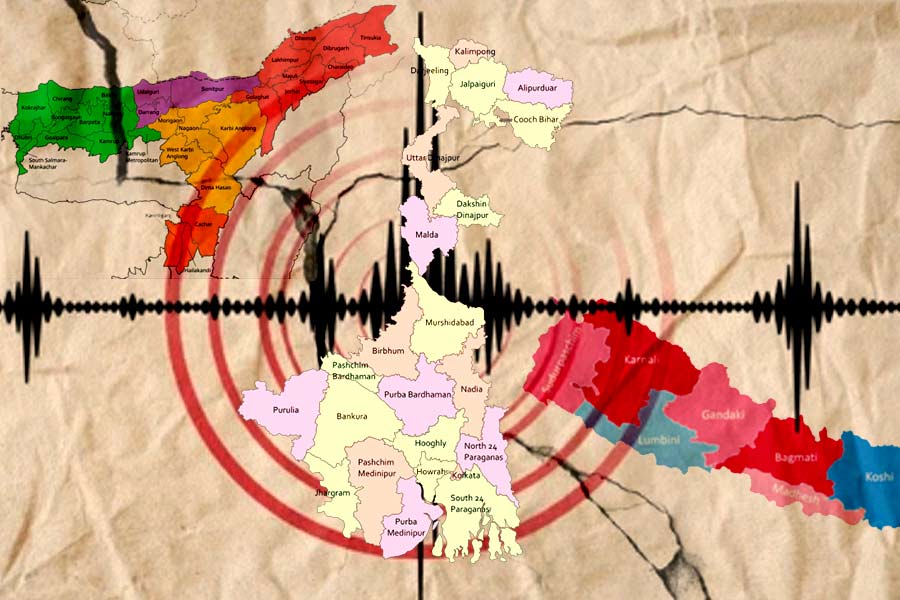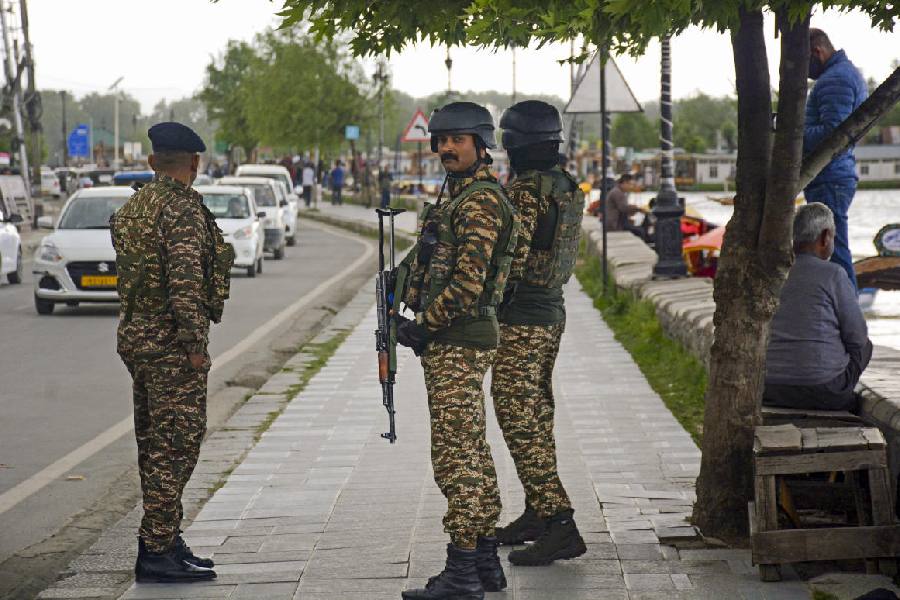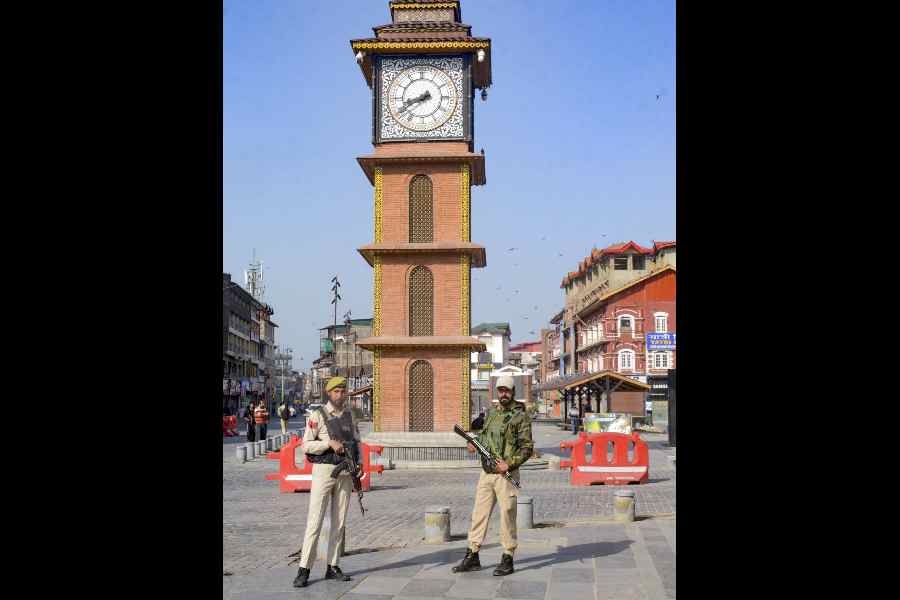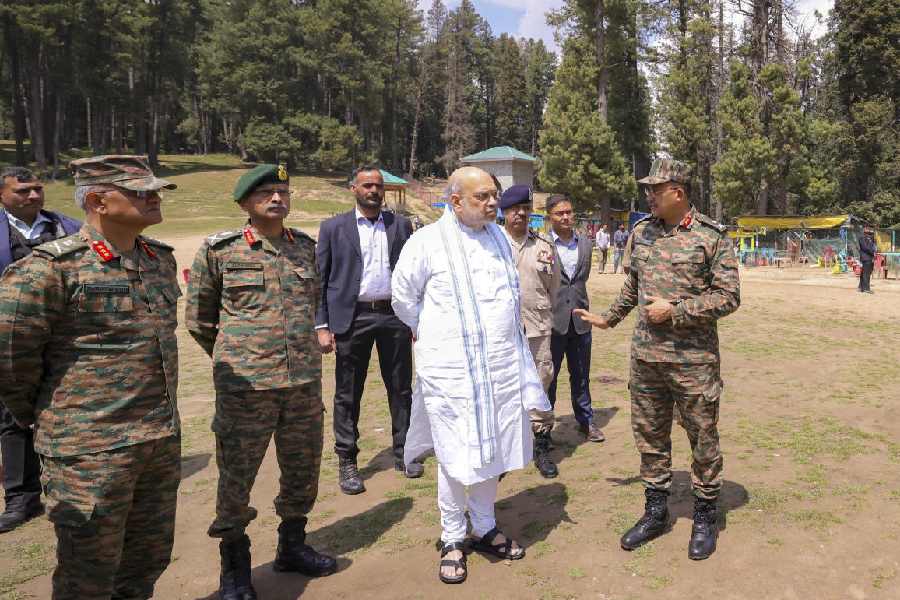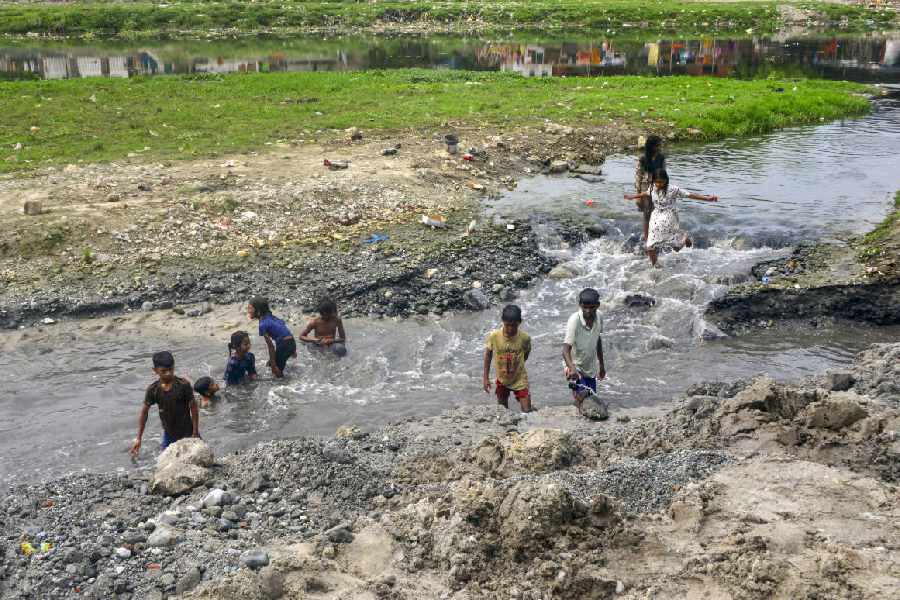Four days, three earthquakes, strikingly close in time and location.
The tremors in Nepal, Assam and the Bay of Bengal have sparked concerns about seismic activity in east and northeast India. Are these earthquakes linked, or is it just a coincidence?
The latest earthquake hit Nepal on Friday, with a magnitude of 5.5 as per India’s National Center for Seismology (NCS). It occurred at Lat: 27.79 N, Long: 85.75 E, at a depth of 10 km.
It shook the area 65 km east of Kathmandu in the Sindhupalchowk district, along the Himalayan mountain range. No damage or casualties have been reported yet.
Earthquake strikes Nepal's Kathmandu, tremors felt in North Bengal and Bihar, no casualties reported
On Thursday, an earthquake shook Assam’s Morigaon district, measuring 5.0 at a depth of 16 km. Tremors were felt in Guwahati and as far as neighbouring countries like Bangladesh, Bhutan and China.
On Tuesday, an earthquake occurred in the Bay of Bengal, with a magnitude of 5.1 at a depth of 91 km. The tremors reached Kolkata, West Bengal, and Odisha, but the deep oceanic epicentre minimised the impact.

Shutterstock
Is there a connection between these back-to-back quakes? “There is no connectivity of all these occurrences of earthquakes in India, everywhere the tectonic settings are different,” Dr O.P. Mishra, director of the NCS, told The Telegraph Online.
“If one looks at the Bay of Bengal earthquake which happened on the 25th of February, that was also a seismogenic zone, but it was a sub-oceanic earthquake, meaning the earthquake occurred beneath the ocean bottom. It was a 5.1 magnitude earthquake, the nearest coast about 285 to 286 kilometres from east Puri, Sambalpur and Bhubaneswar. Hence, people felt the shaking, because the distance was within 300 km. However, this earthquake was felt up to 350 km, as people in Kolkata also felt tremors.”
“In the past, many earthquakes were reported in the Bay of Bengal, but they were not felt. The earthquakes occurring in Delhi was due to a very localised phenomenon called hydro-fracturing that happened in the Jhil Park area. That was an area with numerous water channels, river channels and they corrode with the rocks and it happens,” he added.
“Similarly, Assam and Nepal are also seismogenic zones, it was already demarcated. And the earthquake in Assam occurred in the zone which is already subjected to stress owing to the presence of plateaus and hills. Demarcated seismogenic faults release the stress. In Assam it is related to the Assam tectonics of that zone, which means one can say the northeast tectonics,” he explained.
“In Nepal, the central Himalayas is the collisional tectonics region. They are controlling the tectonic factors here. These are all independent earthquakes. We have 59 per cent of the total territory seismogenic. But it is not the earthquake that kills the people. It is actually the worst [kind of building] structure that kills the people,” said the director.
Seismic activity in these areas is common, and ensuring better infrastructure, emergency planning is crucial, the NCS director underlined.
Sanjay K. Prajapati, a scientist at the NCS, also said there was no need to worry about a “big one coming”.
“If one checks the past records there were always frequent earthquakes in that particular region,” he said. “It does not indicate that a big earthquake is going to come.”

